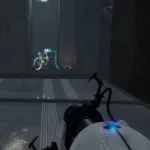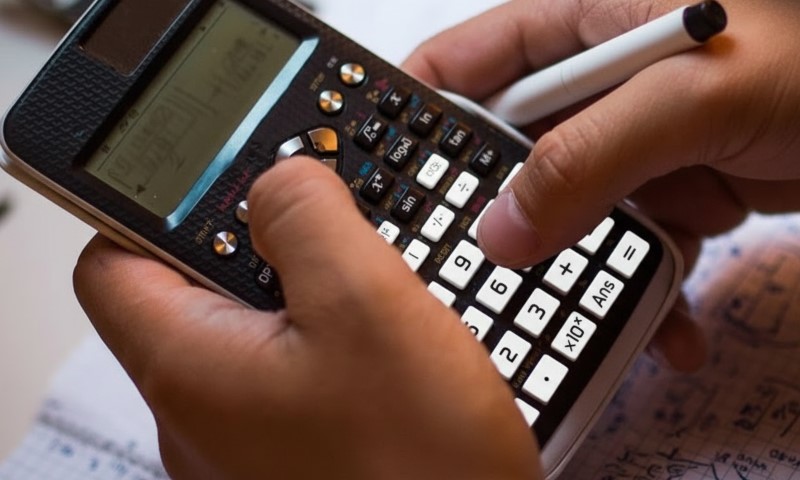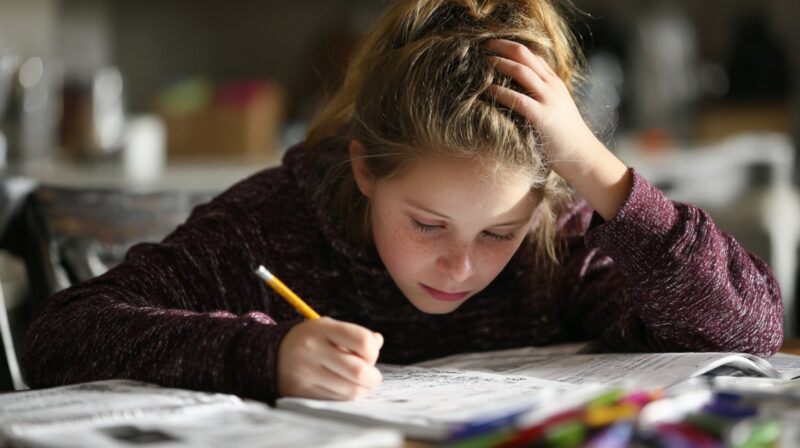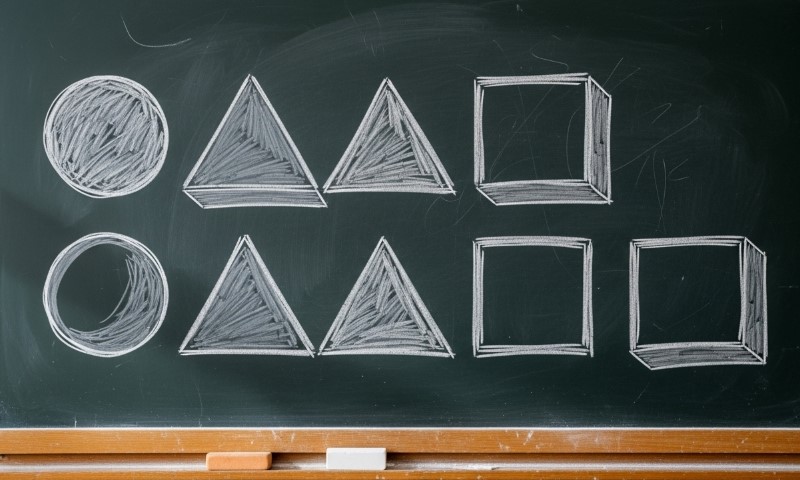
Share Post:
Kids love a good “wait… what just happened?” moment. A Möbius strip delivers that spark with nothing more than paper, tape, and scissors.
You make a loop, add a half twist, and suddenly your strip has one continuous side and a single edge that never ends.
It looks simple, yet it opens a door to big ideas in math, art, and even engineering. Let’s get into the details.
Table of Contents
ToggleKey Points
A Quick Definition Kids Can Grasp
A Möbius strip is a loop made by taking a long rectangle of paper, giving it one half twist (180 degrees), and taping the ends together.
In mathematical language, it’s a non-orientable surface with one boundary. In kid language, it’s a loop that somehow has only one side and one edge.
| Term (Kid Version) | Meaning (Math Version) |
| Side | Continuous surface area you can travel on without jumping off |
| Edge | The boundary of that surface |
| Non-orientable | No consistent “front” or “back” exists everywhere on the surface |
Make One in 60 Seconds
Hands-on activities are the fastest way to turn an abstract concept into something kids can see and feel.
You’ll need a strip of paper, tape, pen, and scissors.
Put your pen on the surface and keep drawing. You’ll trace the entire strip without lifting your pen. Now try the same thing along the edge.
You’ll go all the way around and come back to where you started. Both results show why mathematicians call the strip one-sided with one continuous edge.
Why One Side Is Such a Big Deal
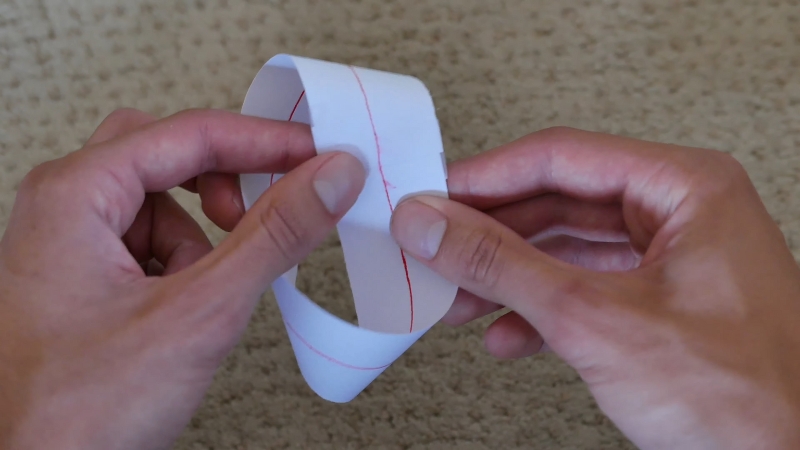
On an ordinary paper loop with no twist (a cylinder), the front and back are separate. On a Möbius strip, the “front” and “back” are in the same place.
If a tiny robot ant walks around once, it returns flipped like a mirror image. That flip means you cannot label directions consistently on the surface.
Vocabulary Teachers Can Use
- Surface: A shape you can move along without leaving.
- Boundary: The edge of a surface. A Möbius strip has exactly one boundary loop.
- Non-orientable: No way to pick a consistent “left or right” everywhere on the surface.
Those three ideas give students a gentle start into the world of topology, the branch of math concerned with properties that remain unchanged under stretching or bending.
The Famous Cutting Experiments
After making a strip, scissors bring the real “wow.”
- Cut along the center line: Instead of getting two pieces, you get one longer loop with two full twists.
- Cut one-third of the way from the edge: You get two interlinked loops, one thin and one thick.
These cutting results are predictable once you know some topology, but they feel like magic the first time you do them.
They’re perfect for prediction journals or “claim-evidence-reasoning” conversations in a classroom.
| Cut Position | Result |
| Center line | One longer loop with two twists |
| One-third from the edge | Two interlinked loops (thin and thick) |
| One-quarter from the edge | Even more elaborate linked shapes |
A Short History
In 1858, August Ferdinand Möbius and Johann Benedict Listing independently discovered the concept of a one-sided surface—what we now call the Möbius strip. A little-known fact is that neither realized immediately that they had stumbled upon the same geometric oddity. Their… pic.twitter.com/m3lAJjYcbk
— Physics In History (@PhysInHistory) August 1, 2025
In 1858, two German mathematicians, August Ferdinand Möbius and Johann Benedict Listing, independently described the strip while studying the properties of surfaces.
That’s why you may hear “Möbius band” or see “Listing’s band” in older texts. Long before that, artists had drawn ribbon patterns with twists that look surprisingly Möbius-like, but the formal mathematical description dates to 1858.
You can share with kids that math ideas sometimes have long artistic or cultural prehistories before being written down.
Gentle Math Behind the Strip
You don’t need heavy formulas to enjoy a Möbius strip, but a few facts help curious kids and teachers.
- One boundary: Trace the edge with a finger, and you never hit a second edge.
- Non-orientable: A traveler returns mirrored after one lap.
- Euler characteristic: Mathematicians use a number called chi to summarize features. For a Möbius strip, chi equals 0. That places it in the same “chi family” as a cylinder, even though one is orientable and the other is not.
If you like equations, there’s a neat way to describe a Möbius strip with coordinates in space.
Wolfram MathWorld lists a standard parameterization that produces the classic ribbon shape used in computer graphics and 3D prints.
Keep that for enrichment or advanced students.
Related Shapes Kids Will Ask About

Curiosity doesn’t stop with one strip. Having a comparison table ready can anchor learning.
| Shape | Sides | Edges | Orientable? | Fun Fact |
| Cylinder | 2 sides | 2 edges | Yes | Basic untwisted loop |
| Möbius strip | 1 side | 1 edge | No | Half twist creates a mirror flip |
| Klein bottle | 1 side | 0 edges | No | A Klein bottle cut lengthwise becomes two Möbius strips |
Kids often light up when they hear that the Klein bottle, sometimes called a “grown-up cousin” of the Möbius strip, cannot exist in our three-dimensional space without self-intersections. It’s a playful way to hint at higher dimensions.
Classroom-Ready Activities and Prompts
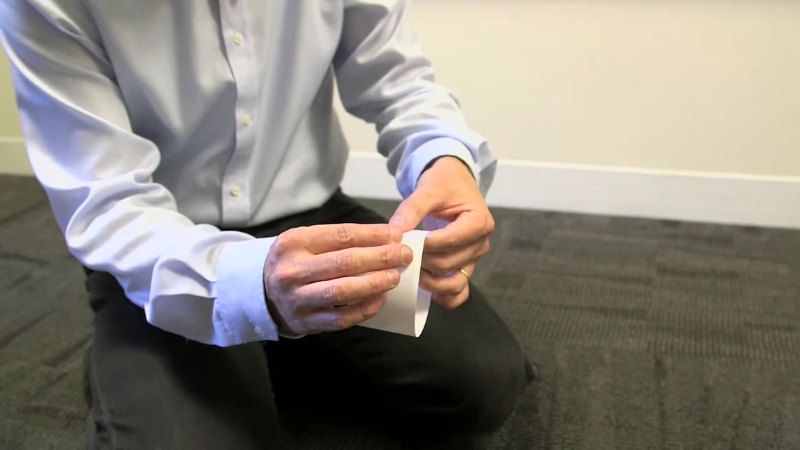
Hands-on activities go beyond “telling” to “discovering.” Here are five proven ways to work with the strip:
1. “One Side” Proof by Drawing
Have students draw a midline all the way around the band without lifting the pen. Ask: “How many sides did you just color?” Guide them to notice it’s truly one continuous surface.
2. Prediction Lab with Scissors
Before cutting, students must predict the outcome. Try centerline, one-third in, and one-quarter in. Then compare predictions and results. Extend with a gallery walk of the surprising loops they created.
3. Edge-Count Challenge
Ask students to trace the edge of a cylinder, then a Möbius strip. Record “number of edges” in a class table. Conclude with a short written explanation.
4. Ant Walk Role-Play
One student is an “ant” tracing a path. When the ant completes one lap, they flips a paper arrow they carries to show the mirror effect. Great kinesthetic demo of non-orientability.
5. Art Integration
Show M. C. Escher’s “Möbius Strip II (Red Ants),” then let kids design their own creatures crawling on a paper model.
Discuss how the animals never cross an edge yet visit “both sides.” Tie in with perspective and pattern. Museums and art resources frequently feature this print.
Real-World Connections Kids Can Picture
Möbius strips are not just puzzles. Engineers have used the idea in systems that benefit from uniform wear.
- Conveyor belts: Some were built with a Möbius twist so both “sides” of the belt take turns facing outward. That spreads wear across the entire surface and can extend service life.
- Ribbons, tapes, and cartridges: Similar principles were used in magnetic tape systems, typewriter ribbons, and even early printer cartridges.
- Science museums: The National Museum of Mathematics (MoMath) runs educator sessions and events where students build bands and explore topology hands-on.
You can even point out how the famous recycling symbol is called the “Möbius loop” in design.
It’s a visual nod rather than a perfect mathematical model, but the idea of continuity and endless recycling is the inspiration.
Music and Culture
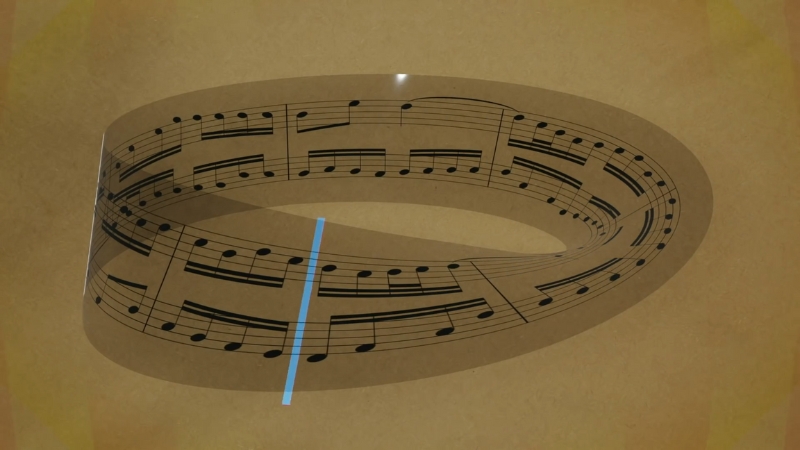
Mathematicians have connected the Möbius idea to musical canons and looping themes. Articles from respected math outlets explore those links, offering a cross-curricular hook.
Kids who love music can see how math underpins patterns in sound, not just shapes on paper.
Common Misconceptions to Clear Up
Kids often test ideas out loud. Having crisp answers helps:
- “It has two sides if I just flip it over.” Flipping in space doesn’t create a new side. The surface itself connects back on itself. Your pen drawing without lifting is a practical test.
- “Cutting down the middle should give two pieces.” Not for a Möbius strip with a single half twist. It becomes one longer loop with two twists. Different cut positions create linked loops.
- “The one-side idea is just a trick of folding.” It’s a genuine property studied in topology, the math of shapes that can stretch and bend. Non-orientability is a precise concept, not just a party trick.
A Story Kids Remember
Ask students to imagine a tiny paint roller that paints the “outside” of a belt. On a normal belt, the inside stays clean.
On a Möbius belt, if the roller keeps moving, the “inside” eventually becomes the “outside” and gets painted too.
That story captures the uniform wear idea that made engineers curious about Möbius configurations.
Extend the Learning
Kids rarely stop at just one experiment. Once they’ve built a Möbius strip, they’re usually eager for the next challenge:
STEM Challenge
Design a classroom display of interlinked loops by doing the one-third cut on several strips and connecting them into a mobile.
Label each with the number of twists and whether the loops are linked.
Math Circle Worksheet
Universities share free worksheets that lead students from making the strip to reasoning about why the centerline cut gives a single longer band. Use those for enrichment.
Museum or Club Visit
Look for a local math museum or maker space program that runs topology workshops. MoMath’s educator sessions are a model for hands-on exploration.
A Deeper Math Note for Teachers
Mathematicians classify surfaces by a few key features: orientability, number of boundary components, and a number called the Euler characteristic.
The Möbius strip is non-orientable, has one boundary component, and its Euler characteristic is 0. Those facts place it in a well-mapped family of surfaces that includes classics like the cylinder and connects to advanced shapes like the projective plane and the Klein bottle.
If you have strong students who enjoy formulas, you can show a standard parameterization that generates a 3D Möbius strip on a computer.
Wolfram MathWorld lists one of the simplest sets of equations used in graphics and geometry software.
A Quick Mini-Lesson Plan (Grades 3 to 8)
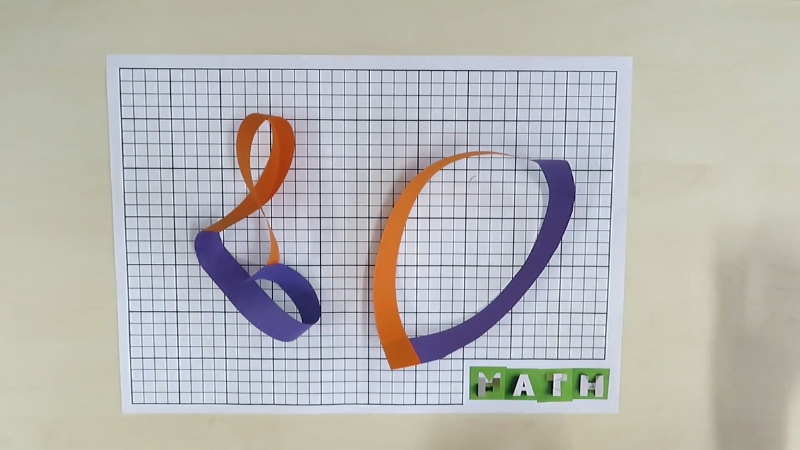
Bringing the concept into the classroom works best with a simple, hands-on plan.
The following mini-lesson gives students in grades 3 to 8 a chance to build, test, and talk about Möbius strips in a way that feels playful but still builds real math skills.
Goals
- Build a Möbius strip.
- Discover one side and one edge.
- Predict and test cutting outcomes.
- Communicate findings in writing or art.
Steps
- Hook: Show Escher’s ants print for curiosity.
- Build: Every student makes a strip and traces a midline.
- Discuss: Tally “edges” on a class chart.
- Predict: Students sketch what they think will happen when cutting along different lines.
- Test: Cut, compare, and label the resulting loops.
- Reflect: Exit ticket with two sentences that use the words “edge,” “surface,” and “twist.”
Assessment Ideas
FAQs
Wrapping Up
@thelatinoteacher Möbius Strip! 🍎 #TheLatinoTeacher #Mathematics #Teacher #MathTeacher #Topology #Mobius #STEMTok #Student #HighSchool #College #Exam #education ♬ Monkeys Spinning Monkeys – Kevin MacLeod & Kevin The Monkey
A Möbius strip is the rare classroom activity that scales from a first “wow” to serious ideas about how mathematicians organize the world of shapes.
It’s quick to build, easy to explore, and rich enough to revisit across grade levels. Pair it with art, music, and engineering for a complete STEAM moment.
| Feature | Why It Matters |
| Simple to make | Kids can build it in under a minute |
| Surprising properties | One side, one edge, mirror flip effect |
| Cross-curricular potential | Links to art, engineering, and music |
| Lasting appeal | Works from grade school to advanced math clubs |
Related Posts:
- 8 Creative Ways to Make Math Fun for Kids in 2025
- Why Are Kids Struggling with Math in School? What’s…
- Making Math Fun - Creative Ways To Keeps Kids…
- The Best Math Challenges for Kids in 2025 & How to Get Ready
- Helping Kids Conquer Math Anxiety – Practical Tips…
- Fun Fractions - How to Make Math Easier for Kids Age 9+







